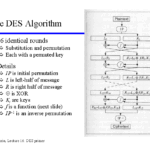In the realm of cybersecurity, the phrase “brute force attack” elicits a spectrum of responses, ranging from curiosity to apprehension. At its core, a brute force attack represents one of the oldest yet most straightforward methods of compromising digital systems. In essence, it involves systematically attempting all possible combinations of passwords or cryptographic keys until the correct one is identified. While this concept may seem overly simplistic, its implications are profound, especially in an age where data breaches are rampant and identity theft is alarmingly prevalent.
To grasp how a brute force attack operates, it is paramount to understand its mechanics. The attacker employs automated tools (often referred to as “cracking tools”) that generate a vast array of potential passwords or keys. Each attempt is executed in rapid succession, often surpassing human capability by orders of magnitude. This relentless pursuit of the correct password necessitates not only computational power but also strategic selection of passwords based on known patterns and common practices among users.
As we delve deeper, it becomes evident that the efficacy of a brute force attack hinges on a few critical variables: the length and complexity of the password, the attacker’s resources, and the system’s defenses. Passwords that are short and composed of common words or predictable sequences, such as “123456” or “password,” are particularly susceptible. Conversely, longer and more complex passwords that incorporate a mix of uppercase and lowercase letters, numbers, and special characters exponentially increase the time required to succeed.
To quantify this, consider the mathematical principles behind brute force attacks. The total number of potential combinations can be calculated using the formula NL, where N is the number of possible characters (letters, numbers, special symbols) and L is the length of the password. For instance, if a password is limited to lowercase letters (26 possible characters) and is eight characters long, the total combinations amount to 268, equating to 208,827,064,576 possible variations. Attacking such a password at a rate of 1 billion guesses per second would still necessitate over 200 seconds—an unacceptably long duration in the digital landscape of today.
In stark contrast, consider a password comprising a combination of uppercase letters, lowercase letters, numbers, and special characters, extending to twelve characters in length. The permutations multiply astronomically, with a total of over 6 trillion combinations. Under the same attack rate of 1 billion attempts per second, the time required to crack this password balloons to over 190 years. This illustrates not only the increasing difficulty of brute force attacks against stronger passwords but also emphasizes the critical need for users to adopt robust password creation strategies.
The elements of an effective defense against brute force attacks extend beyond merely choosing a complex password. Many systems today implement security measures that substantially hinder the effectiveness of such attacks. These measures may include account lockout mechanisms after a certain number of failed login attempts, CAPTCHA tests that verify human interaction, or rate limiting that restricts the number of login attempts from a single IP address. Moreover, organizations are increasingly encouraging the use of two-factor authentication, which adds an additional layer of security that notwithstanding the success of a brute force attack would still require a secondary verification method.
Despite the obstacles, it is crucial to understand that brute force attacks remain a viable technique for many cybercriminals, especially if they are able to leverage distributed networks, colloquially referred to as “botnets.” A botnet is a collection of compromised devices – often unwittingly-activated computers – spread across the globe. Attackers can orchestrate coordinated brute force attacks using thousands of these devices simultaneously, drastically reducing the time required to crack even the most complex passwords.
The implications of successful brute force attacks range from minor inconveniences to catastrophic data breaches. For individuals, the immediate consequences can include loss of personal data or unauthorized access to sensitive information. For businesses, the ramifications can extend to legal repercussions, financial losses, and irreparable damage to reputation. The stakes are particularly high within sectors where regulatory compliance is paramount, such as finance and healthcare.
So, what can be concluded from this analysis? The narrative surrounding brute force attacks should not be simplified to a mere question of whether the method is effective or not. It invites reflection on broader themes of cybersecurity resilience, the human propensity for laxity in security measures, and the continuing cat-and-mouse game prevalent between defenders and attackers in the digital age.
Ultimately, brute force attacks serve as a sobering reminder that as technology evolves, so too do the strategies employed by cyber adversaries. By understanding the mechanics behind these attacks, individuals and organizations can better fortify their defenses, instilling a mindset that prioritizes security vigilance as an integral part of their digital interactions. Engaging with this topic not only fosters awareness but also empowers users to take proactive steps in safeguarding their digital identities against ever-evolving threats.









Leave a Comment